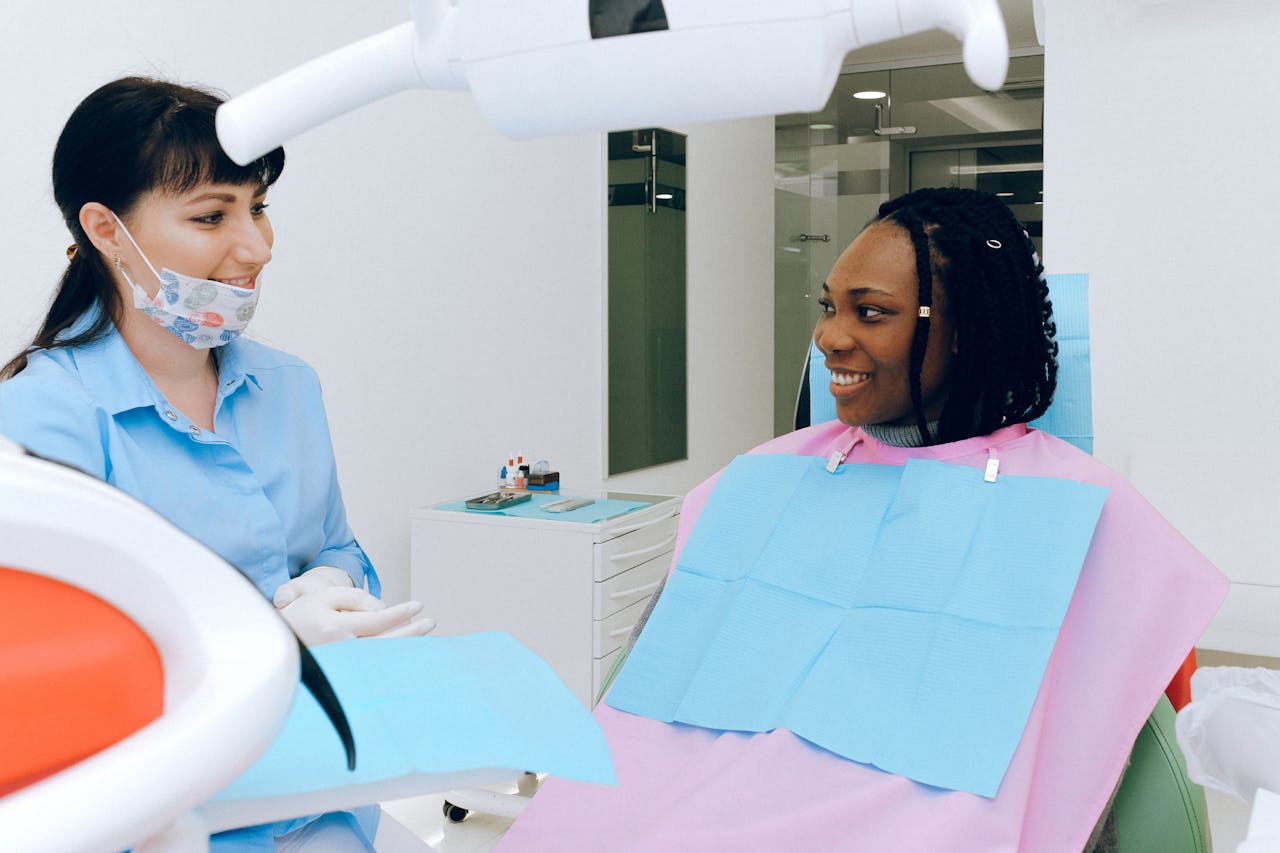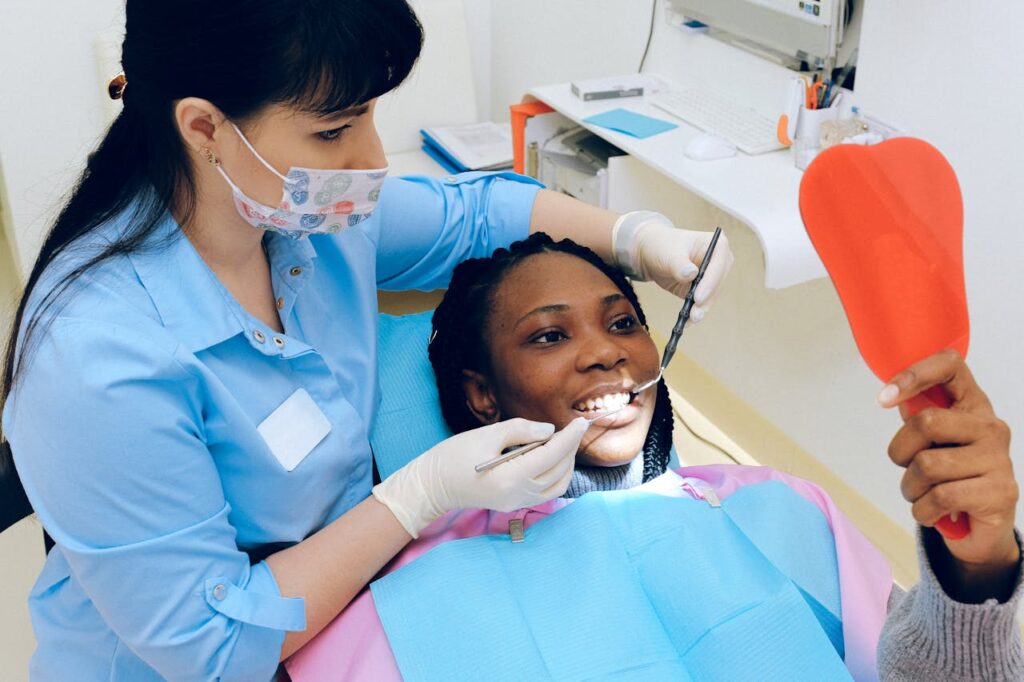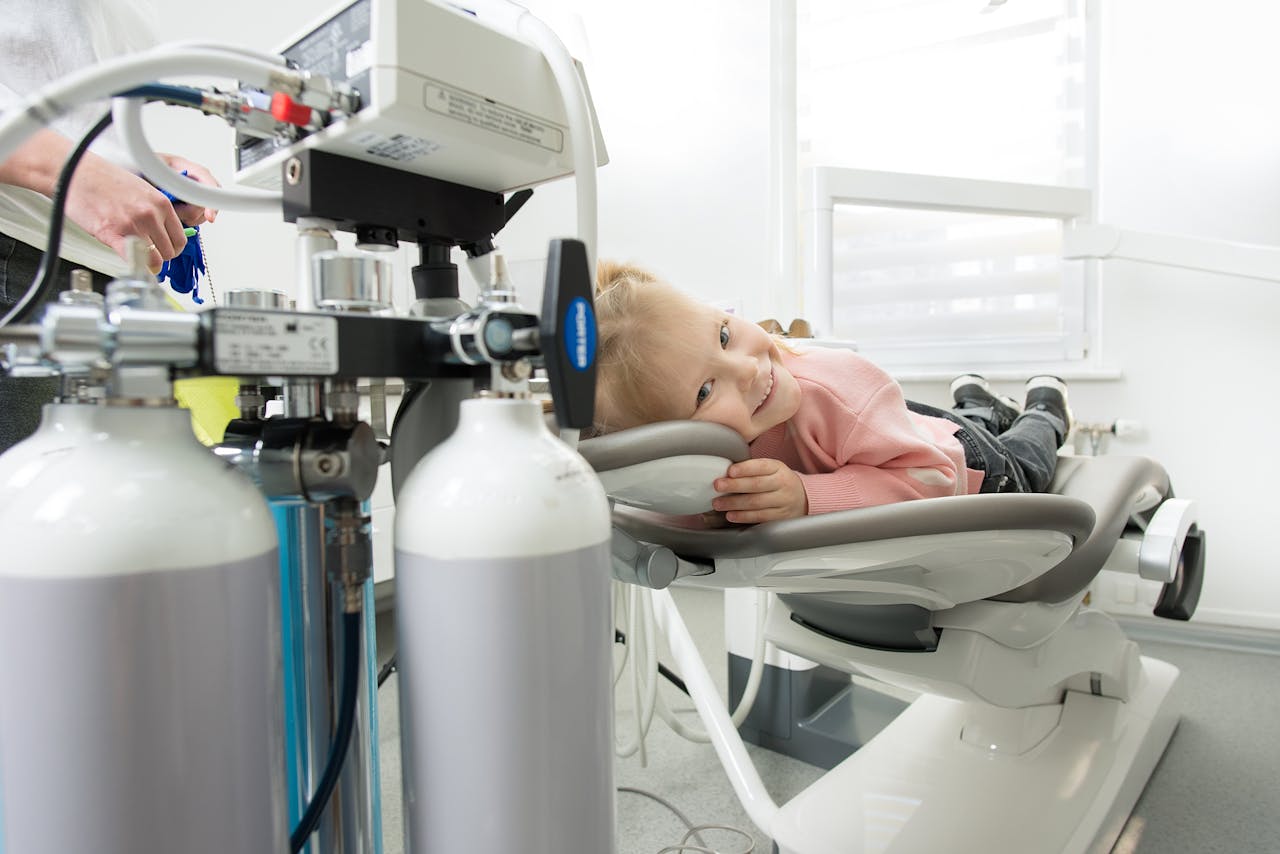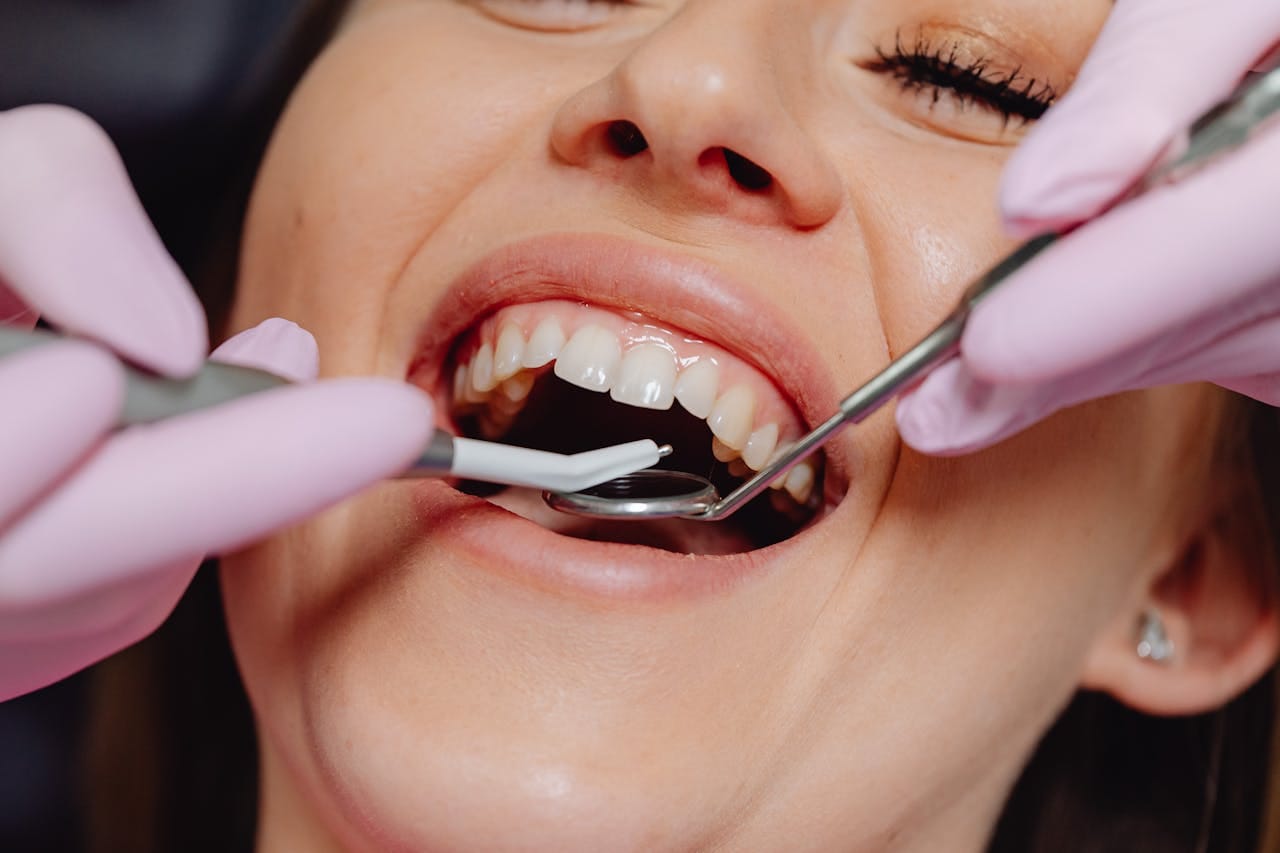Understanding the Different Types of Dental Cleanings and Their Benefits

Introduction
Maintaining a healthy smile isn’t just about brushing twice a day. Regular dental cleanings play a crucial role in oral health, preventing issues before they become serious problems. But did you know there are different types of dental cleanings, each designed to address specific needs? In this article, we’ll dive deep into the various types of dental cleanings available and explore their benefits. Whether you’re a long-time patient or someone new to the idea of dental cleanings, this guide will help you understand the best options for your oral health.
What Are Dental Cleanings?
The Basics of Dental Cleanings
Dental cleanings are professional procedures performed by dental hygienists or dentists to remove plaque, tartar, and stains from your teeth. While regular brushing and flossing at home are essential, they aren’t enough to keep your teeth free from harmful buildup. Dental cleanings reach areas that your toothbrush simply can’t.
Why Regular Cleanings Matter
Regular dental cleanings are a critical part of preventive care. They help to remove plaque and tartar that can lead to cavities, gum disease, and other oral health issues. By staying on top of your cleanings, you’re investing in a healthier, brighter smile.
The Different Types of Teeth Cleanings
Not all dental cleanings are the same. Depending on your oral health needs, your dentist may recommend one of the following types of cleanings:
Prophylaxis Cleaning
What Is Prophylaxis Cleaning?
Prophylaxis, often called a “routine cleaning,” is the standard cleaning most patients receive during their regular dental checkup. This type of cleaning focuses on removing plaque and tartar from the surface of the teeth and above the gumline.
Who Needs Prophylaxis Cleaning?
This cleaning is ideal for patients with healthy gums and minimal plaque buildup. If you’re maintaining good oral hygiene at home, a prophylaxis cleaning twice a year may be all you need.
Scaling and Root Planing
What Is Scaling and Root Planing?
Scaling and root planing, often referred to as a “deep cleaning,” is a more intensive cleaning procedure aimed at treating gum disease. It involves removing plaque and tartar from below the gumline and smoothing the tooth roots to help the gums reattach to the teeth.
The Process Involved
Scaling is the process of removing plaque and tartar from the tooth surface, while root planing involves smoothing the roots to remove bacterial toxins. This procedure may require local anesthesia to ensure comfort.
Who Needs Scaling and Root Planing?
Patients with gum disease or those at risk for periodontal issues may require scaling and root planing. It’s a critical step in managing and reversing gum disease.
Periodontal Maintenance Cleaning
What Is Periodontal Maintenance?
Periodontal maintenance is a specialized cleaning schedule for patients who have been treated for gum disease. This type of cleaning helps to keep the disease under control and prevent its return.
How It Differs From Regular Cleaning
Unlike a regular prophylaxis cleaning, periodontal maintenance is performed more frequently and focuses on areas that are prone to plaque buildup. It may involve scaling and root planing as needed.
Who Requires Periodontal Maintenance?
If you’ve been treated for periodontal disease, your dentist will likely recommend periodontal maintenance to keep your gums healthy and prevent the disease from progressing.
Gross Debridement Cleaning
What Is Gross Debridement Cleaning?
Gross debridement cleaning is a procedure designed to remove heavy plaque and tartar buildup, particularly in patients who haven’t had a dental cleaning in a long time. This cleaning serves as a preliminary step before a more detailed cleaning can be performed.
When Is Gross Debridement Necessary?
If it’s been years since your last dental cleaning, or if you have significant plaque and tartar buildup, gross debridement might be necessary to prepare your teeth for further treatment.

Full Mouth Debridement
What Is Full Mouth Debridement?
Full mouth debridement is an extensive cleaning procedure that involves removing substantial amounts of plaque and tartar from all surfaces of the teeth. This process is often required for patients who have not received regular dental care and have significant buildup.
Who Benefits From Full Mouth Debridement?
Patients who have neglected their dental hygiene for an extended period may benefit from full mouth debridement. It’s the first step in restoring oral health and preparing the mouth for additional treatments.
Benefits of Regular Teeth Cleanings
Now that we’ve covered the types of cleanings, let’s look at the benefits of keeping up with your dental cleaning appointments:
Preventing Gum Disease
Regular dental cleanings are your first line of defense against gum disease. By removing plaque and tartar, these cleanings help to prevent the inflammation and infection that can lead to gum disease.
Early Detection of Oral Issues
During your cleaning, your dentist or hygienist will also examine your mouth for signs of oral health problems, such as cavities, gum disease, or oral cancer. Catching these issues early can save you time, money, and discomfort down the road.
Improving Overall Health
Your oral health is closely linked to your overall health. Conditions like heart disease, diabetes, and stroke have been connected to poor oral hygiene. By keeping your mouth healthy, you’re also taking care of your body.
Brightening Your Smile
Who doesn’t want a brighter smile? Dental cleanings remove stains from coffee, tea, and other foods, leaving your teeth looking whiter and more polished.
Freshening Your Breath
Bad breath can be a sign of underlying dental issues. Regular cleanings help to remove the bacteria that cause bad breath, giving you fresh, clean breath you can feel confident about.
Choosing the Right Teeth Cleaning for You
Not sure which type of cleaning is right for you? Here’s how to decide:
Consulting with Your Dentist
The best way to determine which cleaning you need is to consult with your dentist. They can assess your oral health and recommend the appropriate type of cleaning for your situation.
Understanding Your Dental History
Your dental history plays a big role in determining the type of cleaning you need. If you’ve had gum disease in the past, for example, you might require more frequent or specialized cleanings.
Considering Your Oral Health Needs
Think about your current oral health needs. Do you have a lot of plaque buildup? Are your gums inflamed or bleeding? These factors can help guide your decision on the type of cleaning that’s best for you.
What to Expect During a Dental Cleaning
Wondering what happens during a dental cleaning? Here’s a breakdown:
The Initial Examination
Your cleaning will start with a thorough examination of your mouth, teeth, and gums. Your dentist or hygienist will look for signs of plaque, tartar, and any potential issues that need attention.
The Cleaning Process
The actual cleaning process involves removing plaque and tartar from your teeth, both above and below the gumline. Your hygienist will use special tools to ensure your teeth are thoroughly cleaned.
Post-Cleaning Care
After your cleaning, your dentist will give you tips on how to maintain your oral health at home. You may also receive fluoride treatment or other preventive care to protect your teeth.
How Often Should You Get a Teeth Cleaning?
The frequency of your dental cleanings depends on your oral health needs:
General Recommendations
For most people, a dental cleaning every six months is recommended. This schedule helps to keep plaque and tartar under control and allows your dentist to monitor your oral health.
Factors That Affect Frequency
Some factors that might affect how often you need a cleaning include your age, overall health, dental history, and whether you have gum disease. Your dentist can help you determine the best schedule for your cleanings.
Dental Cleaning Costs and Insurance Coverage
Worried about the cost of dental cleanings? Here’s what you need to know:
Understanding the Costs
The cost of a dental cleaning can vary depending on the type of cleaning you need and your location. Routine cleanings are generally more affordable, while more intensive cleanings like scaling and root planing may cost more.
What Insurance Typically Covers
Most dental insurance plans cover the cost of routine cleanings twice a year. However, coverage for more specialized cleanings may vary. Be sure to check with your insurance provider to understand what’s covered.
Making Dental Cleanings Affordable
If you’re concerned about the cost of dental cleanings, talk to your dentist about payment plans or financing options. Some dental offices also offer discounts for cash payments or membership plans that can help reduce costs.
Promoting Oral Health Between Cleanings
Maintaining good oral health between your dental cleanings is essential. Here’s how to keep your smile in top shape:
Daily Oral Hygiene Practices
Brush at least twice a day, floss daily, and use mouthwash to keep your teeth and gums healthy. Regular oral hygiene is your best defense against plaque buildup.
The Role of Diet in Oral Health
Your diet plays a significant role in your oral health. Avoid sugary foods and drinks, and opt for a balanced diet rich in fruits, vegetables, and whole grains.
Avoiding Harmful Habits
Smoking, chewing tobacco, and excessive alcohol consumption can harm your oral health. Avoid these habits to keep your teeth and gums in the best possible condition.
Common Myths About Dental Cleanings
There are plenty of misconceptions about dental cleanings. Let’s debunk a few:
Myth 1: Cleanings Are Painful
Many people avoid dental cleanings because they believe they’re painful. In reality, most cleanings are completely painless, especially when performed regularly. If you’re concerned about discomfort, talk to your dentist about what to expect.
Myth 2: Cleanings Are Unnecessary if You Brush and Floss
While brushing and flossing are crucial, they can’t remove all the plaque and tartar from your teeth. Dental cleanings are necessary to reach areas that your toothbrush and floss can’t.
Myth 3: You Don’t Need a Cleaning if You Have No Symptoms
Even if you’re not experiencing any symptoms, you could still have underlying oral health issues. Regular cleanings help to catch these problems early before they become more serious.
FAQs About Dental Cleanings
Here are some common questions about dental cleanings:
How Long Does a Dental Cleaning Take?
A routine dental cleaning usually takes about 30 to 60 minutes, depending on the level of plaque and tartar buildup.
Can I Eat After a Dental Cleaning?
Yes, you can eat after a dental cleaning, but it’s best to avoid sticky or hard foods for a few hours, especially if you received a fluoride treatment.
Are There Any Risks Associated with Dental Cleanings?
Dental cleanings are generally safe and beneficial. However, some patients with sensitive teeth or gums may experience slight discomfort during the procedure.
How Can I Prepare for My Teeth Cleaning?
There’s no special preparation needed for a dental cleaning. Just brush and floss as usual before your appointment.
What Should I Do if I Have Dental Anxiety?
If you’re anxious about cleanings, talk to your dentist. They can offer solutions like sedation or relaxation techniques to help you feel more comfortable.
Conclusion
Regular dental cleanings are an essential part of maintaining your oral health. Whether you need a routine prophylaxis cleaning or a more intensive procedure like scaling and root planing, keeping up with your dental cleanings will help you enjoy a healthy, bright smile for years to come. At Fullerton Dental Art in Fullerton, California, we’re dedicated to providing top-notch dental care to help you achieve and maintain the best oral health possible. Schedule your next cleaning today and take the first step toward a healthier smile.
Schedule your appointment today by filling the form below and take the first step toward a healthier and brighter smile. Stay connected with us on Facebook for the latest updates, and check out our reviews from valued patients on Yelp!
FAQs After the Conclusion
How Often Should I Visit the Dentist for a Cleaning?
It’s generally recommended to visit the dentist for a cleaning every six months, but your dentist may recommend a different schedule based on your oral health needs.
Is a Dental Cleaning the Same as Teeth Whitening?
No, a dental cleaning removes plaque and tartar, while teeth whitening specifically focuses on removing stains and lightening the color of your teeth.
What Should I Do if My Gums Bleed During Cleaning?
Mild gum bleeding during cleaning can be a sign of gum disease. Talk to your dentist about your symptoms so they can provide the appropriate care.
Are Dental Cleanings Safe for Kids?
Yes, dental cleanings are safe and beneficial for children. They help prevent cavities and establish good oral hygiene habits from a young age.
How Can I Maintain the Results of My Dental Cleaning?
To maintain the results of your dental cleaning, practice good oral hygiene, avoid sugary foods and drinks, and visit your dentist regularly for checkups.
Fullerton Dental Art Contact Details
Location : 717 N PLACENTIA AVE FULLERTON, CA 92831
Phone: +1-714-577-0105
Book An Appointment Now Fullerton, CA
Latest Post
101 Pediatric Dentistry: Creating Positive Dental Experiences

Introduction To Pediatric Dentistry Pediatric dentistry is about more than just treating tiny teeth; it’s about nurturing a lifetime of healthy smiles. Ensuring that…
Achieve A Better Dental Health with Fullerton Dental Art

Introduction Dental health is crucial not just for a brighter smile, but for overall well-being. At Fullerton Dental Art, we are dedicated to providing…
Best 3 Types of Dental Cleaning in Fullerton, CA

Introduction to Types of Dental Cleaning Keeping your teeth clean isn’t just about looking good—it’s essential for overall health. Let us discuss the types…



